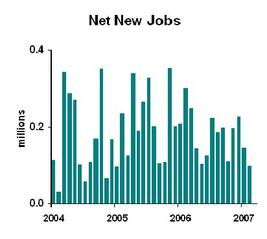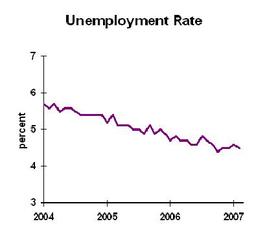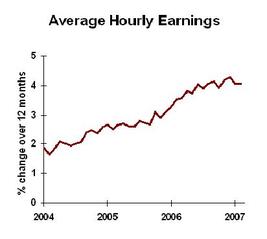Job growth continued last month, but at a fairly slow pace.
Construction jobs dropped sharply, the first large decline in this category for this cycle. Manufacturing jobs also declined, but gains in the service sectors outweighed these job losses. Unemployment edged down another tenth of a percent:
Even though job growth is modest, the labor market is tight. In fact, there are a few sectors where availability of labor is the constraining factor on job growth. Overall, however, the sectors with falling employment are declining because of slack demand, not labor shortages.
Wage rates continued to grow at a moderate-to-high rate.
This data report shows no clear need for the Federal Reserve to ease right now. The rising wages and low unemployment rate do not comfort the Fed’s inflation worries. However, the soft job growth will moderate the voices calling for a rate hike. In other words, the forces at work are fairly well balanced. The Fed is nearly equally worried about inflation and unemployment, so look for short-term interest rates to remain steady for at least a few months.
Business Strategy Implications: Economic growth continues, though at a less-than-average pace. Dealing with the tight labor market is still important. If you’re new to this issue, check out our past posts, 7 Steps to Better Employee Retention, and 6 Steps to Hiring in a Tight Labor Market.


